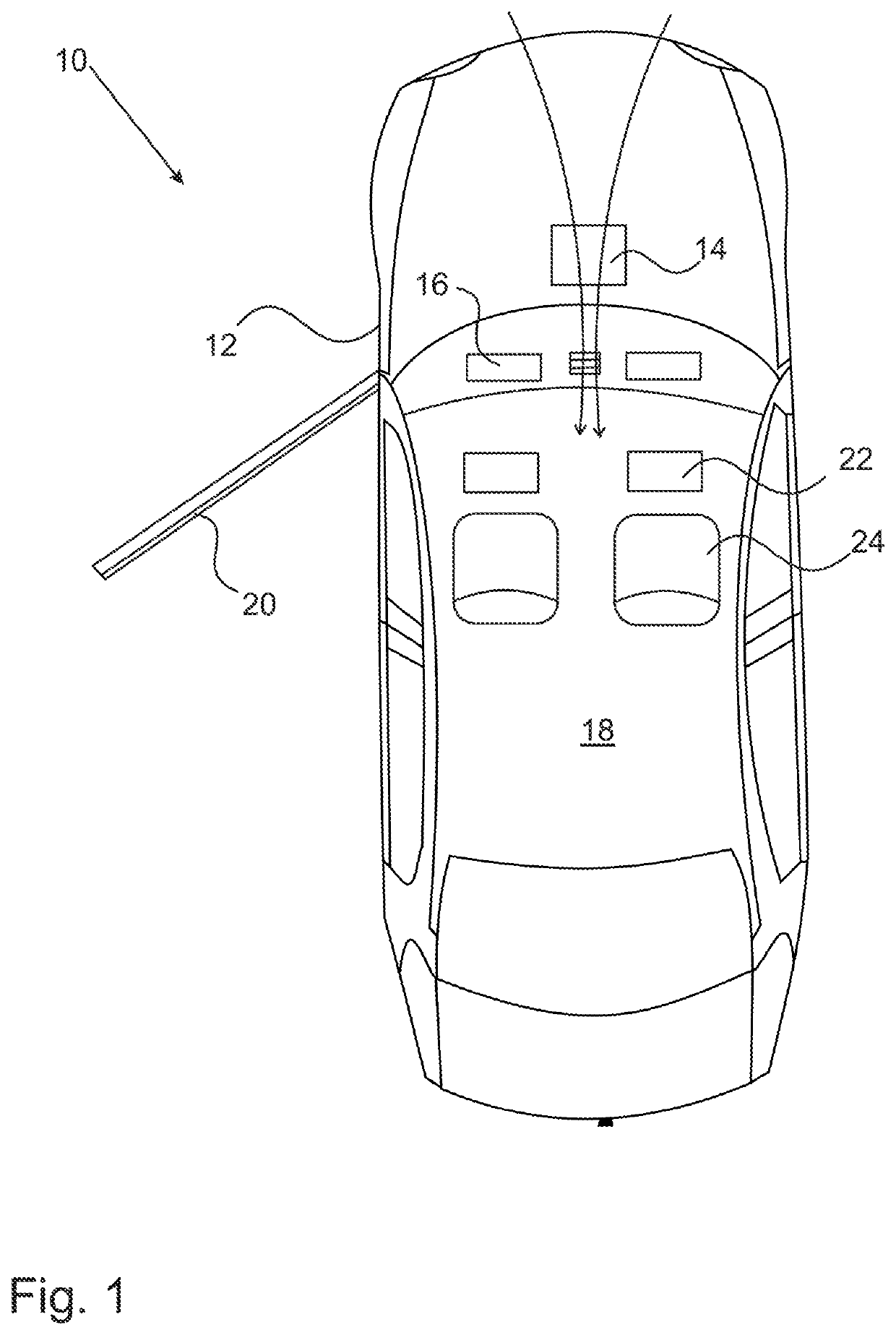Air conditioning system for a vehicle and vehicle with an air conditioning system
a technology for air conditioning systems and vehicles, applied in vehicle heating/cooling devices, vehicle components, transportation and packaging, etc., can solve the problems of increasing the number of electronic components, electric driven vehicles face particular problems in heating and cooling, and the waste heat of electric engines is often not sufficient, etc., to achieve excellent thermal conductivity, good efficiency of active and passive heating and/or cooling devices, and good control
- Summary
- Abstract
- Description
- Claims
- Application Information
AI Technical Summary
Benefits of technology
Problems solved by technology
Method used
Image
Examples
Embodiment Construction
[0038]An air conditioning system 10 for a vehicle 12 comprises according to the invention at least one heat exchanger 14, which is coupled to an outside airflow.
[0039]The heat exchanger 14 comprises at least one nanomaterial, in particular a composite material containing carbon nanoparticles or inorganic nanoparticles embedded in a polymer matrix. Such nanomaterials have a particularly high thermal conductivity, thus providing a very effective heat exchanger 14. The heat exchanger 14 is thermally coupled to electronic devices 16, for example displays of the vehicle 12.
[0040]The thermal coupling between the heat exchanger 14 and the electronic devices 16 can be performed by further nanomaterial containing units, for example thermal conductors or heat pipes or the like, so that the waste heat of the electronic devices is transferred to the outside air stream in a particularly efficient manner.
[0041]It is further advantageous if the outside air stream can alternatively be directed into...
PUM
 Login to View More
Login to View More Abstract
Description
Claims
Application Information
 Login to View More
Login to View More - R&D
- Intellectual Property
- Life Sciences
- Materials
- Tech Scout
- Unparalleled Data Quality
- Higher Quality Content
- 60% Fewer Hallucinations
Browse by: Latest US Patents, China's latest patents, Technical Efficacy Thesaurus, Application Domain, Technology Topic, Popular Technical Reports.
© 2025 PatSnap. All rights reserved.Legal|Privacy policy|Modern Slavery Act Transparency Statement|Sitemap|About US| Contact US: help@patsnap.com

